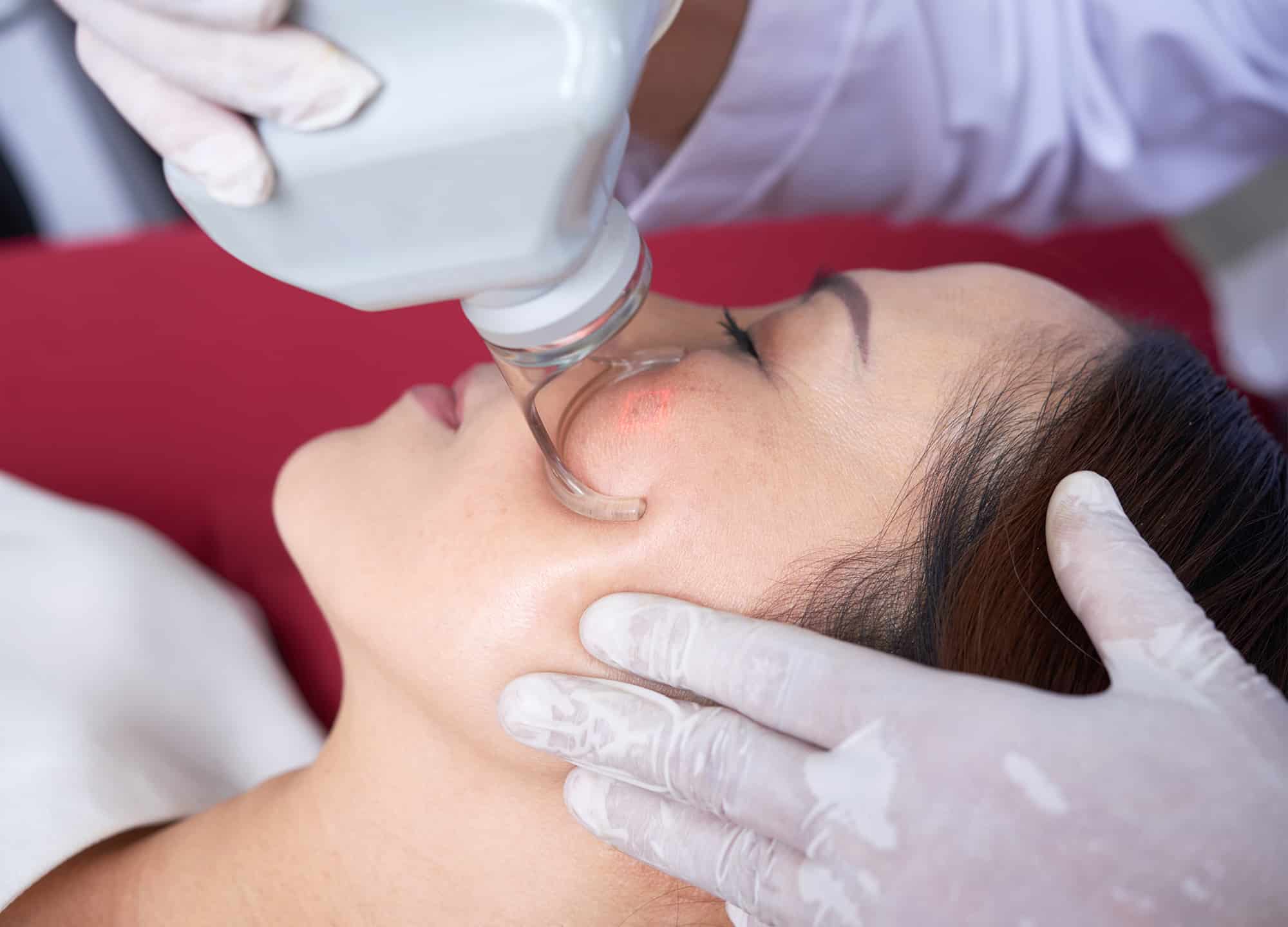Pimples are inevitable. Despite all the preventative tricks—like eating a healthy, balanced diet, regularly changing your pillowcase, or simply keeping up with a cleansing routine—it is likely even those with the most low-key, nonreactive skin will have to deal with annoying red bumps every now and then. But for many, acne is a more serious condition that can last for decades and leave stubborn scars behind.
Acne occurs when hair follicles are clogged with oil, hair, and dead skin cells, causing an inflammation on the skin, otherwise known as a pimple. According to Dr. Michelle Henry, a board-certified dermatologist in New York City, “That inflammation can destroy the collagen in the area, and the collagen is what gives your skin its strength and substance.” When your body can’t produce enough collagen to repair the damage caused by deep acne, a scar forms.
“Not all scars are treated equally,” says Dr. Hooman Khorasani, a board-certified dermatologist in New York City, and the best treatment plan depends on the type of scarring you have. “It is important to break down the scars into different components,” said Dr. Khorasani. These components include indentations, poor texture, redness, and keloids.
Although those with cystic acne are more prone to acne scars, anyone can get residual scarring and changes in texture. But acne scarring is treatable, the derms say. Here are some of your most effective options.
In-office acne scar treatments
For indentations
After a pimple heals, the area can become sunken, or indented, if it has lost some of its collagen and structure, says Dr. Michelle Henry. Lasers are best for treating indentations, because they create micro injuries in the skin that then send the body’s repair system into overdrive, to produce new collagen.
For patients with light skin, Dr. Henry likes Fraxel; for those with dark skin, she prefers microneedling or radiofrequency treatments that heat and tighten underlying layers of the dermis. (All the aforementioned treatments usually require multiple sessions.) Why the difference for dark skin? “It’s all about making sure that the laser beam is addressing the right target and has a wavelength that pushes it deep enough so that it doesn’t disturb the melanin on the surface of the skin,” explains Dr. Henry. The wrong laser on the wrong skin tone could cause burns or hyperpigmentation.
Another solution for acne scar indentations is dermal fillers, says Dr. Michele S. Green, a board-certified dermatologist in New York City. Depending on the depth of the indentation, she likes Bellafill, Sculptra, and Voluma. In some cases, she puts microdroplets of TCA Cross, a trichloroacetic acid solution, into the acne scar in order to raise it.
“I do subscisions at the same time that I do the fillers, because I find that when I do subscisions on each individual scar, I can break up the scar tissue that’s tethered and I can inject the hyaluronic acid or filler at the same time,” said Dr. Green. “That way, the scars can grow new collagen in and you can have it look better almost immediately.” She will often then go over the scars with a Fraxel or eMatrix laser.
If you have indentations, it’s best to consult with your doctor in person, since the depth of the scar determines the best solution.
For uneven texture
For poor skin texture due to acne, Dr. Green finds microneedling with platelet-rich plasma (PRP) and lasers, specifically eMatrix, to work well. The eMatrix, she says, is “a laser that’s safe for any skin type” and can be used at a high radiofrequency, even on dark skin, without risking burning or hyperpigmentation.
For redness
Often, indentations and poor texture also go hand in hand with redness. To reduce the appearance of pigmented scars, Dr. Khorasani and Dr. Green turn to pulsed dye lasers, like the Vbeam. They deliver bursts of energy to dilated blood vessels, which destroys the red pigment and allows the natural skin tone to return.
For keloids
Keloids typically occur in dark skin. “A keloid is basically collagen that’s gone wild. It’s a scar that can’t control itself and keeps reforming,” says Dr. Green. “Keloid scars generally need steroid solutions like intralesional kenalog placed into them, to shrink up that scar tissue.”
At-home acne scar treatments
To treat acne scars at home, prescribed retinoids are key. Dr. Henry typically gives patients with acne and acne scars either Epiduo or Altreno, which help to stimulate collagen in the skin and can aid in evening out texture. Her recommendation for over-the-counter retinol creams include Sunday Riley’s A+ High Dose Retinoid Serum ($85) and Olay Regenerist Retinol 24 moisturizer ($28.99).











